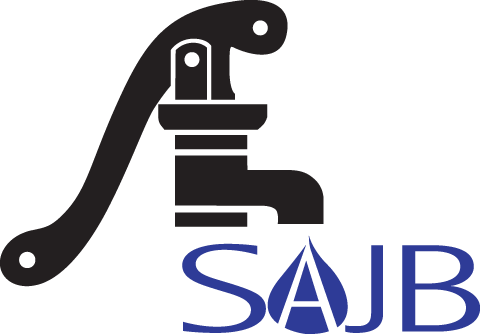Water stakeholders tout collaboration
JEFF SELLE jselle@cdapress.com | Posted: Friday, November 21, 2014 12:00 am
COEUR d’ALENE After dozens of panel discussion over three days, water stakeholders representing Idaho, Washington and the Coeur d’Alene Tribe agreed to work together to resolve regional water issues. Download PDF
During the final panel discussion at the Spokane River Forum on Thursday, seven of those representatives agreed that it isn’t going to be easy, but working together is better than starting a legal water war between the two states.
The moderator, Rob Lindsay of Spokane County, summed up the panel discussion with a list of areas on which all stakeholders appeared to agree.
“First I want to say it is seven to zero for collaboration with a ‘don’t panic’ from Rick (Eichstaedt),” Lindsay said. “Everyone also agreed that we need to be very inclusive, and it goes without saying that we need to build relationships and trust across multiple agencies.”
As an attorney, Rick Eichstaedt was asked to lay out the two states’ legal options for resolving the bistate water quality and quantity issues.
“You don’t want to pick fights you don’t need,” he said. “Because when you do find yourself in a fight like this, you only have a few options.”
Actually, he said, there are only four options. One is taking the issue directly to the U.S. Supreme Court to determine equitable distribution but he said that is big gamble. Option two is to have Congress apportion water to the states. “Raise your hand if you would be comfortable with Congress doing it,” he said. No one in the audience did so.
Third, he said, the two states could enter into a compact that details who gets what. Idaho has done that twice in the past, but he doesn’t expect to see that in this region.
That leaves an informal agreement, but he said the downside to such an agreement is that it is unenforceable.
“How can we work together to resolve any conflicts that come up?” he asked. “Maybe a universal agreement or maybe a very specific agreement that maps out how we work together.”
Nevertheless, Eichstaedt suspects the agreement option will be pursued. He said the Inland Empire region is going to be fighting over water issues for decades into the future.
“I like to think we are not going to end up in one, two or three anytime soon, nor do I suspect we want, nor do I think we really need to,” he said. “With that said, we do have some issues, and some issues in regard to water flow have thankfully been resolved.”
He explained that Washington’s pending instream flow rules have pretty much been resolved, as Avista’s dam relicensing process was approved. Washington’s instream flow proposal closely follows Avista’s federally approved operations plan.
“In other words, it won’t be hard to meet those instream flows,” he said, adding that the two states worked together pretty well on the relicensing issue. “We can learn from that.”
Without going to court or pursuing a bistate compact, Eichstaedt said, the reality is Idaho has very little say over the matter, and likewise Washington can’t tell Idaho what do with its adjudication process.
“We have to realize there are limitations of what each side is going to do,” he said. “There is a lot of rhetoric that people throw out there. Until we actually reach a real conflict, we should keep talking but we should not elevate these issues to crisis.”
Bob Haynes, former North Idaho director of the Idaho Department of Water Resources, pointed to another collaboration the two state agencies consider successful, the bistate aquifer study. Haynes said that process began with a lot of mistrust, but became a collaborative process in the end.
“I think that the perception we have in this region where collaboration is concerned has increased greatly,” he said. “I can recall about 12 years ago a couple of water rights applications came across my desk that sought a very large quantity of water. We didn’t have an understanding of the resource itself, and those applications were ultimately denied.”
But, Haynes said, the region owes those companies some gratitude for spending some money to help the state begin to understand what it has in the aquifer.
“As a result there was a bistate study that was put together, and that in itself was an exercise in collaboration,” he said. “We almost literally fought over the shape of the table when it came to making decisions about the bistate study.”
Ultimately, what came from that was a highly useful product that was used as a basis for much of the scientific work presented at the forum over the past three days.
Haynes said the collaboration taught him to be more inclusive and to look at issues from a more global perspective.
“The fact of the matter is, what is benefiting folks in Coeur d’Alene if done right will benefit folks in Spokane too,” he said. “I would just caution that you make sure every interest in this has a seat at the table.”
At the end of the panel discussion, Lindsay read from a list of takeaways he had generated. He said keeping information sharing going between agencies and other stakeholders was important.
“Identify the conflict and tension. I think that was a great comment,” he said. “I have encountered that in my own career. We have had some groups get together around great ideas, but we didn’t have that conflict of tension to hold us together, and after a couple of years they just kind of fizzled out.”
Another comment that resonated with Lindsay was “be real,” he said. “Stop if you are being ineffective let’s not waste people’s time. Be effective.”
Finally, Lindsay said, it is important to recognize that collaboration is a longterm process and succession planning is needed to ensure that when decisionmakers retire, their successors don’t start undoing progress that has already been made.
